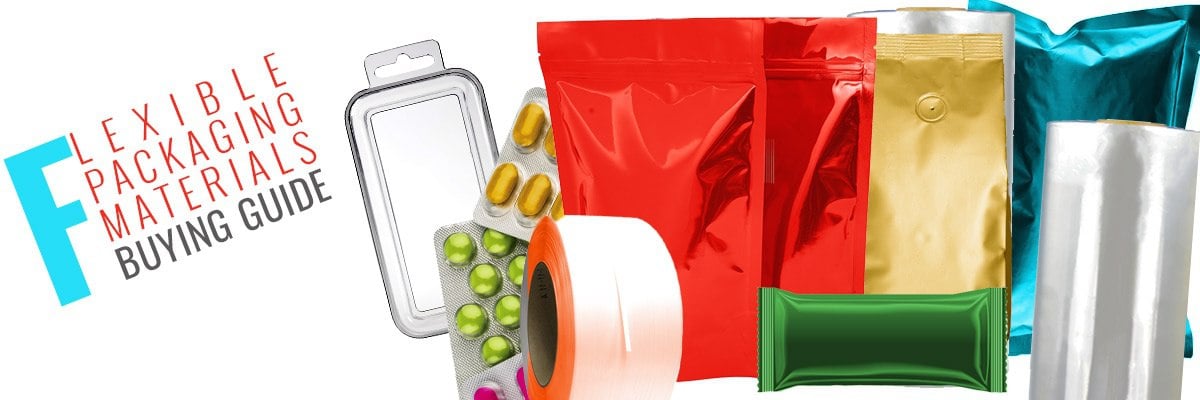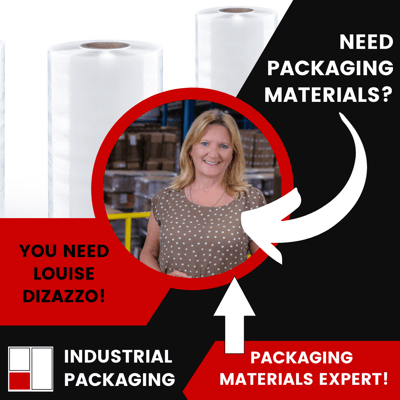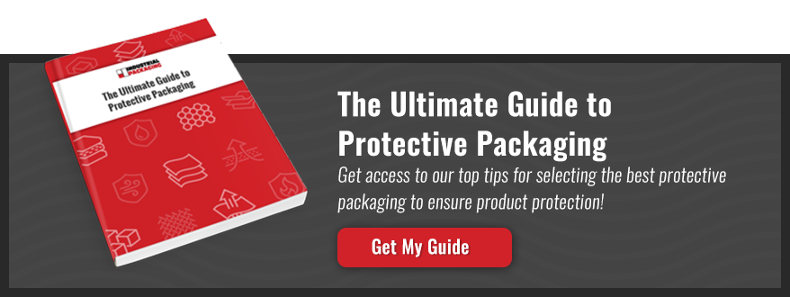Flexible Packaging Materials Buying Guide
Packaging Materials | Environment | The Business of Packaging | Investment | Packaging Design | Shipping Protection | Food Packaging | Packaging Psychology
From consumer goods to electronics. From cosmetics to medical supplies. Flexible packaging is a crucial material in the supply chain of many industries and products.
Flexible packaging combines the best qualities of plastics and films. These versatile packaging supplies are a functional solution that requires minimal production costs.
Flexible packaging is any package or any part of a package whose shape can be readily changed.” Common examples of flexible packaging include bags, pouches, shrink films, tubes, sleeves, and carded packaging.
In this article, we detail why flexible packaging is so beneficial. And, we also outline considerations for purchasing flexible packaging for your products.
Why Use Flexible Packaging?
Flexible packaging is a solution that businesses turn to for a variety of reasons. For starters, it’s less expensive than rigid packaging. But, it also offers excellent durability and product protection. Polyolefin shrink films are a popular high-quality material. These films are approved by the FDA to increase shelf life.
The quality of flexible packaging isn’t its only calling card, however. It’s also touted for its ability to be tailored to fit the specifics of any product. It’s possible to package products of many shapes and sizes with flexible packaging. And, you can do this with an array of materials.
That is good news for businesses creating packages that help sell their products. With flexible packaging, companies can think outside of the box to engage consumers.
Speaking of consumers, flexible packaging helps designers create attractive packages. These packages are more convenient for consumers. Additionally, flexible packaging is a form of sustainable packaging. These alternatives include cardboard, glass, and other types of rigid packaging.
Are you interested in learning more about your flexible protective packaging options? Get your free copy of the Ultimate Guide to Protective Packaging here!
Flexible Packaging Material Options
There are many different options for flexible packaging materials. For the sake of brevity, we’ll limit our list to the most popular items.
Keep in mind that working with a packaging partner will help you select the best packaging. When you use the ideal solutions, you’ll save time and money in the long run.
Stand Up Pouches
One of the best alternatives to traditional packaging is stand-up pouches. They function as their name suggests – standing upright on shelves. This packaging has an airtight closure.
Stand-up pouches (also known as flexible pouches) are extremely easy to pack, and they have incredible branding capabilities through digital printing. Stand-up pouches can be custom printed with eye-catching graphics and breathtaking colors.
Stand-up pouches are fully customizable to your needs. And stand-up pouches have multiple barrier layers of protection. They can suit nearly any product, many of which are listed in the flexible films section below.
Flexible Films
As you can already tell, there are many different flexible film materials. Here are 14 of the most popular:
- (EAA) Ethylene Acrylic Acid – A tie layer between aluminum foil and other polymers.
- (EVA) Ethylene Vinyl Acetate – An adhesive layer, moisture barrier, and heat-sealable food contact layer.
- (EVOH) Ethylene Vinyl Alcohol – An oxygen barrier typically placed between PE/PP films, EVOH must be protected from moisture.
- (PA) Polyamide – A film that works well as an outer layer, PA provides machinability, a gas/aroma barrier, heat resistance, and will not stick to a sealer bar.
- (PC) Polycarbonate – A moisture and heat-resistant barrier with machinability.
- (PE) Polyethylene – Another heat-sealable food contact layer, as well as a moisture barrier. It can also be combined with gas/aroma barriers such as (EVOH, PA).
- (PEN) Polyethylene Naphthalate – A gas/aroma barrier with machinability and heat resistance.
- (PET) Polyethylene Terephthalate – A film that provides machinability strength, PET is all of a gas/aroma barrier, moisture barrier, and heat-resistant.
- (PET-G) Glycol-Modified Polyethylene Terephthalate – A heat-sealable food contact layer.
- (POF) Cross-Linked Polyolefin – A heat-sealable film best suited for food packaging but also used to laminate print products. Made using a cross-direction technique in which film is stretched both mechanically and manually.
- (PP) Polypropylene – A moisture barrier that can be combined with other gas/aroma barriers or coated with heat-seal coatings such as acrylate and PVDC.
- (PS) Polystyrene – A printable and gas-permeable film that can be combined with other gas/aroma barriers.
- (PVDC) Polyvinylidene Chloride – An O2 barrier and heat-sealable layer that provides gloss and protects print.
- (PVC) Polyvinyl Chloride – A gas/aroma barrier with machinability.
Foil Packaging
Foils are used mainly by the food and pharmaceutical industries. Foil packaging keeps food fresh. And, it keeps food safe by blocking contaminants, increasing your products’ shelf life. It is also a recyclable material.
Additional Protective Packaging
Flexible packaging materials range in type and size. They can be designed for all kinds of packaging needs – from small products to large equipment. Flexible packaging can also be used to palletize bulk products.
Air pillows are a great example of lightweight and secure protective packaging. They protect products from shock and vibration. They do this during transit.
Air Pillow Machine
Air pillows are easy to recycle and dispose of. This is especially true when compared to messy packing peanuts. Electrostatic discharge (ESD) bagging is especially great for packaging sensitive electronics. This is done to avoid damage due to static and friction.
How Do You Know If You’ve Chosen The Ideal Flexible Packaging?
Is your goal to increase your product’s shelf life? Do you want to minimize product loss during transit? You can’t know if you’ve chosen the right solution until you’ve defined all of your requirements. You need some parameters to give you a direction.
In terms of protection, you’ll also need to define what your products need protection from. Do you have a long shipping process with many risks for error?
Will your product be delivered to a location at a high altitude? Does the area have high humidity or low temperatures? These considerations all impact what packaging is the optimal solution.
You’ll also need to set your budget, but don’t make the mistake of being too short-sighted. Beyond cost, you must consider whether you’ll need to set up new packaging machinery (for example, form fill and seal machinery).
And, you may need to add secondary packaging to maintain the safety of your product. As early as possible, communicate with your suppliers, aware of your budget. Discuss any financial constraints. This will help you save time in the material selection process.
Speaking of which, you’ll need to budget time for review and modifications. Don’t expect quick fixes to be cost-effective. Give yourself time to review your flexible packaging.
If you take the proper measures, you can find the perfect packaging for your products. If you need help, download a copy of our Ultimate Guide To Protective Packaging.
About David Roberge
I am grateful to be part of the outstanding Industrial Packaging team. I am able to hang out with some of the most knowledgeable folks in the packaging industry. I feel even luckier that I am able to share that knowledge with you. I love learning, hiking, and growing people and teams both personally and professionally, and helping companies grow better.





